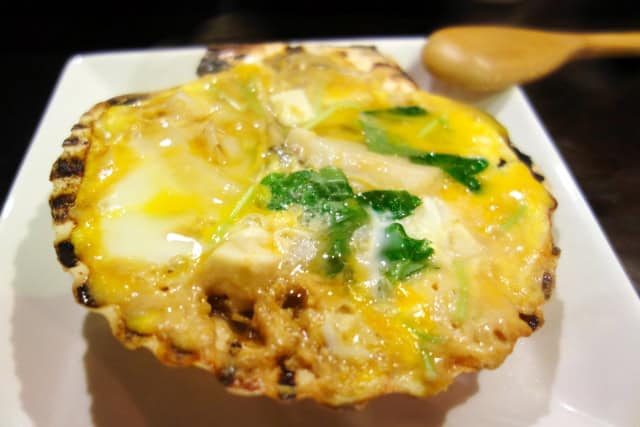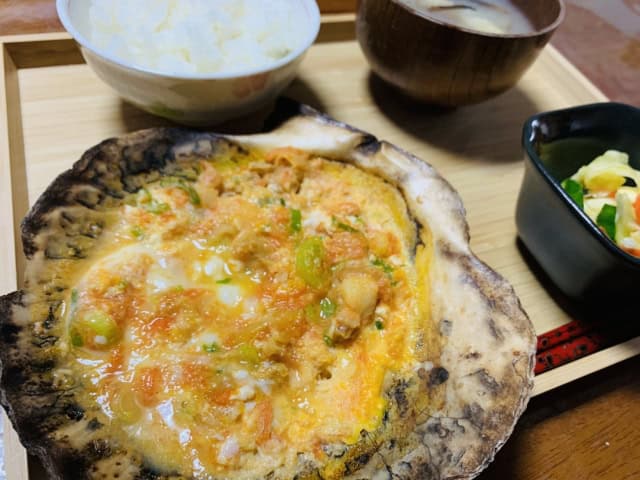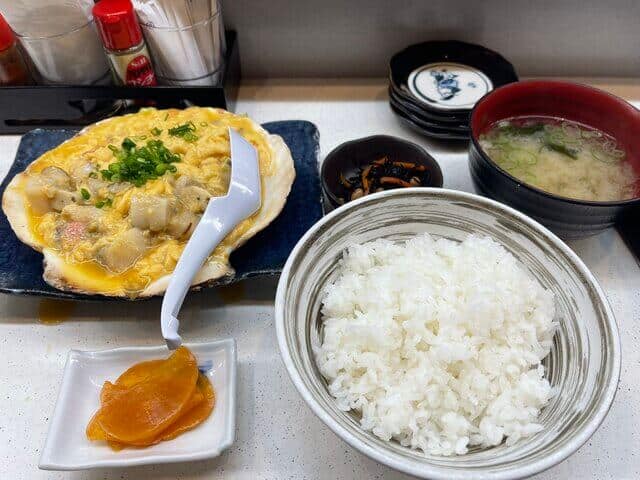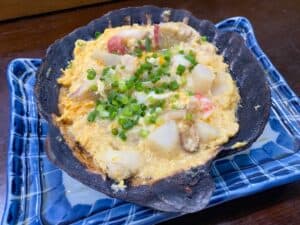Kayaki Miso is a flavorful culinary treasure that hails from Japan. It’s a dish that carries the essence of Japanese cooking traditions. As we delve into the world of Kayaki Miso, you’ll discover the secrets behind its distinct taste and how it plays a special role in Japanese cuisine.
What is Kayaki miso?

Kayaki miso or Grilled shellfish miso is a miso-based sauce commonly used in Japanese cuisine, especially for grilled or broiled shellfish, such as scallops or clams. This is a local dish of the Tsugaru and Shimokita regions of Aomori Prefecture. The specific ingredients and preparation of Kayaki Miso can vary, but it typically includes miso paste, sake, mirin (a sweet rice wine), soy sauce, and sometimes sugar or other seasonings. They brushed the sauce onto the shellfish before grilling, adding a savory and slightly sweet umami flavor. In the Tsugaru area, they cook scallops in their shells with bonito flakes, green onions, miso, and sometimes eggs. Sometimes, they also include scallop meat. In the Shimokita region, they make broth in scallop shells by heating water and then grilling them. Later, they add scallops and other fresh ingredients, simmer everything together, and mix in miso and eggs.
Kayaki miso History

Kayaki Miso has a long history, believed to have its origins in the Edo period when fishermen in Mutsu Bay used scallop shells as makeshift pots to cook fish in dashi stock and miso. There are records dating back to 1674 in the “Edo Ryorishu” mentioning dishes like “Tamagokaiyaki,” where they boiled the shellfish and topped with chicken eggs, and “Miso Kaiyaki,” where locals simmered the shellfish in miso soup stock. Over time, as chicken eggs became more accessible, the dish evolved into what we know today. Back when chicken eggs were scarce, they were considered a valuable source of nutrition and often reserved for the sick and postpartum women.
Osamu Dazai’s “Tsugaru” even describes a sick man-eating grilled shellfish with miso over rice porridge. “Kikisho Aomori Meals,” which documents eating habits from the Taisho to early Showa periods, notes the tradition of consuming Yawameshi, Kayagi (grilled shellfish), miso, and tofu from the third day after giving birth in Hiratate Village. In the Tsugaru Bay area, known for scallop production, people enjoyed “shellfish grilled with miso” since the Edo period. At that time, they used large seashells as cooking vessels to grill scallops with sardine or mackerel fillets and homemade miso. As eggs became more common, they added it to the dish, making it accessible to a wider audience. But initially, it was a special and nutritious food for ill and pregnant women. Osamu Dazai, a Tsugaru native, expressed his admiration for “shellfish grilled miso” in his book “Tsugaru.”
How to eat Kayaki miso?

In the Tsugaru region, they prepare Kayaki Miso simply by using a scallop shell as a cooking vessel. They mix miso into the soup stock, add the ingredients when it comes to a boil, and finish it with an egg. However, in the Shimokita region, known for its abundant seafood, they call it “miso kaiyaki” and often serve it with various sea ingredients like seaweed (funori and nori), sea urchin, squid, and scallops. As they cook the shellfish over a fire, a delightful ocean aroma fills the air, and the combination of simmered eggs and the slightly charred, fragrant miso creates a delicious delicacy. It pairs well with local sake, but people also commonly enjoy it at home served over hot rice.
Kayaki miso FAQ
- What types of seafood are typically used in Kayaki Miso, besides scallops?
In addition to scallops, Kayaki Miso, a traditional Japanese dish, can feature various other seafood ingredients, including clams (such as Manila clams and corbicula clams), squid, sea urchin (uni) for a rich taste, mackerel or sardines for added umami, and seaweed varieties like funori and nori, all contributing to the dish’s unique flavors and textures.
- What is the taste of Kayaki Miso?
It has a pronounced umami richness from the miso and seafood, often with a hint of sweetness and a subtle smokiness from the grilling process. The exact taste can vary depending on regional variations and personal preferences. But Kayaki Miso is generally popular for its delicious and satisfying flavor profile.
Kayaki miso Recipe

Kayaki miso Ingredients
| Ingredients of Kayaki miso for 1 person | Measurements |
|---|---|
| Egg | 23g |
| Bonito flakes | 5g |
| Baked and dried shellfish | 80g |
| Itafu | 10g |
| Handmade red miso | 15g |
| Green onion | 2g |
How to make Kayaki miso?
Rehydrate the shellfish in water and cut it into 7-8mm pieces, and cut the green onions into small pieces. Shave the bonito flakes. Beat the eggs well.
Pour water into the shellfish, add the grilled dried fish, and place on top of the kudoko (charcoal shichirin) to make the soup stock.
When you can smell the aroma of the soup stock, take out the grilled dried fish and add the bonito flakes.
Once the bonito flakes have settled, add the miso and let it dissolve. Adjust the amount of miso to your liking.
Add the board-fu and bring to a boil, then add the beaten eggs, and once the eggs have set, add the green onions and remove from the heat.
Where to buy Kayaki miso?
Nakagawa (なか川)

The original store was founded in 1983 in Mutsu City, Aomori Prefecture. Grilled miso scallops are made by simmering scallops, butterbur, shrimp, oysters, raw eggs, tofu, etc. in a soup with miso and dashi in a large scallop bowl.
Sake Sakana dokoro BANYA (酒肴処番屋)

A popular izakaya in Aomori City. The restaurant is located right in front of the beach, and has a great Showa-era atmosphere. Lunch dishes such as seafood bowls and meat bowls are also delicious, and the scallop miso costs around 600 yen.
Maruo Shokudo (丸青食堂)

A very popular store located in Auga Fresh Market in Aomori City. Founded in 2001 (Heisei 13). The grilled shellfish miso set meal with lots of scallops is priced at 1,150 yen and is both cost-effective and delicious. Their curry rice, ramen, and sushi are also known for being extremely cheap and delicious.
Takeaway

Kayaki Miso in Japan is a delicious seafood dish known for its rich umami flavors, created by grilling seafood like scallops and clams in miso-based sauce. This traditional Japanese specialty showcases the beauty of simplicity and regional diversity in cuisine. By exploring the unique taste of Kayaki Miso, we can appreciate how it differs from other miso-based dishes and gain a deeper understanding of Japan’s culinary traditions, where local ingredients and cooking methods come together to create delightful flavors.
You can check some Japanese miso dishes that we know you would like to try too.
















Comments